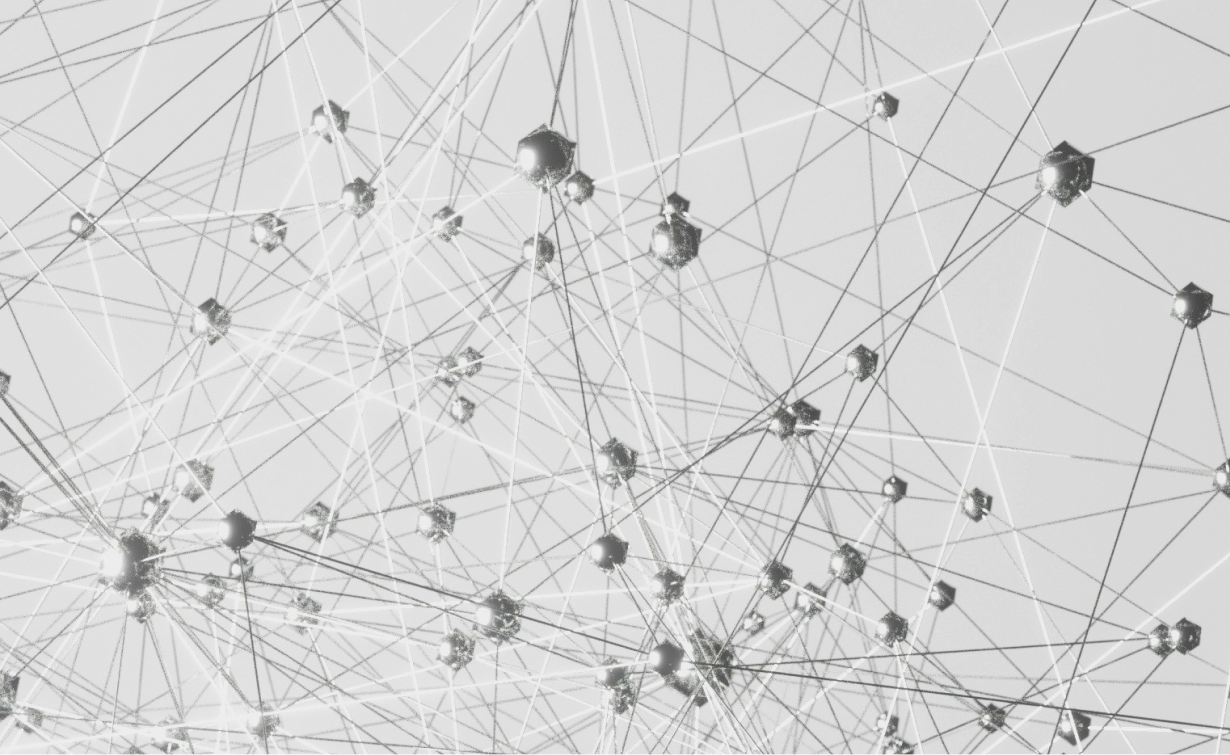Scope 3 categories and best practices for industrial companies

Scope 3 emissions include indirect emissions along the value chain that are not directly controlled by the company, such as upstream supplier processes or downstream product use. For industrial companies, Scope 3 emissions are particularly relevant as they account for a significant portion of their carbon footprint and include indirect emissions across the entire value chain. Companies face the challenge of collecting data from suppliers and customers in order to make sustainable decisions and meet regulatory requirements, such as the Greenhouse Gas Protocol (GHG Protocol). This article provides an overview of the 15 Scope 3 categories relevant to industrial production and outlines best practices for monitoring and reducing them.
What are Scope 3 emissions?
In contrast to Scope 1 (direct emissions from a company's own facilities) and Scope 2 (emissions from purchased energy), Scope 3 emissions encompass the entire value chain of a company—from supplier processes to the use and disposal of products by customers. These emissions are often more complex to track and typically make up the largest portion of an industrial company’s carbon footprint.
Read more about Scope 1 & 2 in our article “What are Scope 1, Scope 2, and Scope 3 CO2 Emissions?”

Overview of the 15 Scope 3 categories of the Greenhouse Gas Protocol
The Greenhouse Gas Protocol (GHG Protocol) outlines 15 categories of Scope 3 emissions that need to be monitored throughout a company's entire value chain. These categories are split into two main areas:
- Upstream emissions refer to emissions generated before products reach the company, such as raw material production, supplier processes, or transportation.
- Downstream emissions occur after the sale of products, including emissions from product use and disposal by customers.
Given that Scope 3 emissions can represent up to 75% of a company's total carbon footprint, accurately tracking them is essential for compliance with sustainability standards and regulatory requirements. The 15 categories defined by the GHG Protocol provide a comprehensive framework that helps companies meet these obligations while minimizing the environmental impact of their entire value chain, including indirect emissions.
These categories cover a wide range of activities along the entire value chain and provide a comprehensive basis for reporting. However, changes or additions may occur in the future as reporting standards and regulatory requirements evolve. It is advisable to keep an eye on current developments.
Relevant Scope 3 categories for industrial companies
Industrial companies, with their complex supply chains and production processes, are particularly impacted by the following Scope 3 categories, which make up a significant portion of their carbon footprint:
- Purchased goods and services (1): This category includes emissions from the production and transportation of purchased materials and services. For industrial companies, this category can account for a large share of emissions, as it covers raw materials such as steel, plastic, and wood. Calculations can be made using various methods, including the supplier-specific method, the quantity-based method, and the financial method. It is especially important to also account for materials that were not consumed during the reporting period.
- Fuel- and energy-related activities (3): This category covers upstream emissions from fuels and energy not included in Scope 1 or 2. It includes emissions generated during the extraction, transportation, and distribution of energy, such as transmission losses in electricity. This is particularly relevant for energy-intensive industries like metals or chemicals. Even renewable energy sources must be accounted for in this category.
- Transportation and distribution (4 & 9): Scope 3.4 includes emissions from transporting materials within the supply chain, while Scope 3.9 covers emissions after products are sold. Companies operating in global markets need to account for these transportation emissions. Emissions can be calculated based on distance, weight, or mode of transport. For example, rail or ship transportation produces significantly fewer emissions than air transport.
- Waste (5): This category encompasses emissions from waste disposal during production. Emissions vary significantly depending on the disposal method (landfill, incineration, or recycling). For industrial companies with large amounts of waste, this is particularly relevant, as optimizing disposal methods can lead to significant emissions reductions.
- Business travel and employee commuting (6 & 7): Business travel generates significant emissions, especially when flights or rental cars are used. These emissions must be recorded in detail and assessed using appropriate emission factors. Employee commuting (7) includes emissions generated during the commute, regardless of whether it is done using public transportation, private vehicles, or remote work. Industrial companies should regularly survey their employees to capture these emissions accurately.
- End-of-Life treatment of sold products (3.12): This category covers emissions generated when sold products are disposed of or recycled at the end of their life cycle. It is relevant for companies manufacturing long-lasting products, such as machinery or construction materials, which remain in use for years or decades. Disposal methods, such as recycling or incineration, significantly impact the level of emissions.
Best practices for industrial companies and recommendations for Scope 3 emissions
Challenges in measuring Scope 3 emissions in industry
Measuring Scope 3 emissions is complex, as it involves the entire supply chain and requires data from numerous suppliers. Often, precise emissions data from suppliers and customers is lacking, making collaboration difficult. Data availability is particularly low for downstream categories, as they are further removed from the company, leading to estimates and inaccurate data.
What should be included in the Scope 3 report?
Given the complexity described, industrial companies should focus particularly on relevant Scope 3 categories such as purchased goods, fuel emissions, and logistics.
Concrete recommendations for industrial companies on reporting & reducing Scope 3 emissions
To be optimally prepared for the measurement and reporting of Scope 3 emissions, preventive measures and best practices can be implemented:
- Request Product Carbon Footprints (PCFs) from suppliers to improve data quality.
- Prioritize quantity-based methods and utilize available data on purchased materials.
- Strengthen supply chain partnerships to achieve reduction targets collaboratively.
- Optimize transportation by using low-emission modes such as shipping or rail.
- Focus on sustainable disposal methods like recycling or composting to minimize end-of-life emissions.
How Tanso reduces the complexity of carbon reporting
Tanso provides a software platform that supports industrial companies in managing their Scope 1, Scope 2, and Scope 3 emissions, ensuring compliance with regulations such as the CSRD and the GHG Protocol.
- Automated data collection: Capturing emissions data in various formats (e.g., CSV, Excel) simplifies the process, reduces manual effort, and improves accuracy.
- Selection of emission factors: Access to a comprehensive database of industry-standard and specific emission factors for precise calculations.
- Audit-ready reports: Reports compliant with international standards that facilitate audits and stakeholder communication.
- Advanced analytics: Tracking of emission targets, identification of hotspots, and data-driven decision-making for enhanced sustainability.
Outlook: Why tracking Scope 3 emissions is crucial for the future of the industry
Tracking Scope 3 emissions is becoming increasingly important as regulatory developments like the EU Taxonomy and the CSRD impose stricter reporting requirements. Additionally, pressure from stakeholders and investors for transparency and sustainability is growing. Companies that measure and disclose their Scope 3 emissions gain a competitive advantage through transparent sustainability reporting, building trust with customers, investors, and business partners, and contributing to long-term business resilience.
FAQs about Scope 3 emissions
How many Scope 3 categories do exist?
There are 15 Scope 3 categories that capture indirect emissions across a company's value chain.
What are category 3 greenhouse gas emissions?
These are all indirect emissions that do not fall under Scope 1 (direct emissions) or Scope 2 (purchased energy). They result from activities such as transportation, production, or product usage.
What are Scope 1, 2, and 3 emissions?
- Scope 1: Direct emissions from owned sources (e.g., combustion).
- Scope 2: Emissions from purchased energy (e.g., electricity).
- Scope 3: Indirect emissions throughout the supply chain and product lifecycle.
What is an example of a category 3 CO2 emission?
An example would be emissions from the transportation of purchased materials before they reach the company (Scope 3.4).
Why are Scope 3 emissions difficult to measure?
They rely on data from third parties (suppliers and customers), which is often difficult to access or incomplete.
What are upstream Scope 3 emissions?
These are emissions that occur in the supply chain before the company, such as during the production or transportation of raw materials.
Is Scope 3 mandatory?
The tracking of Scope 3 emissions is mandatory in many countries under regulations like the EU Taxonomy or the CSRD.
What does Scope 3 upstream mean?
This includes all emissions that occur before the company in the supply chain, such as those from suppliers.
What is Scope 3 downstream?
These are emissions that occur after the sale of products, such as those generated when customers use the products.
What is the difference between upstream and downstream transport?
- Upstream Transport: Transportation of materials from suppliers to the company.
- Downstream Transport: Transportation of products from the company to customers.
What are Scope 4 emissions?
Scope 4 emissions are not yet officially recognized as a standard. They could potentially include future categories for emission avoidance, such as through energy savings.










































.avif)







.jpg)
.jpg)




















-p-800.webp.avif)
-min-p-800.webp.avif)






-p-800.webp.avif)

